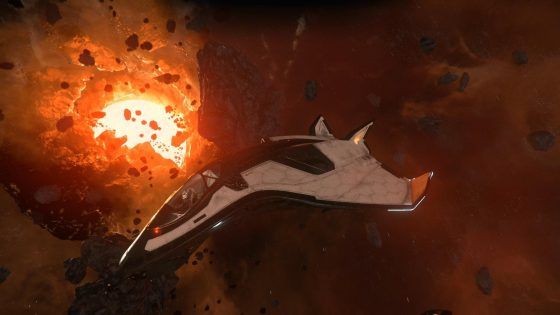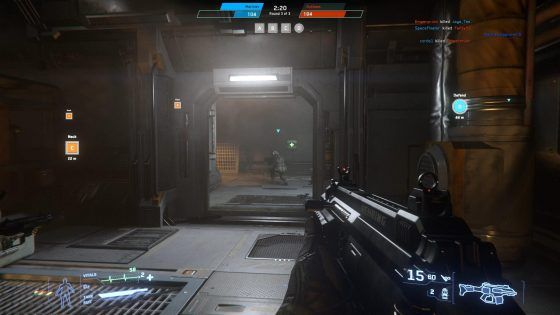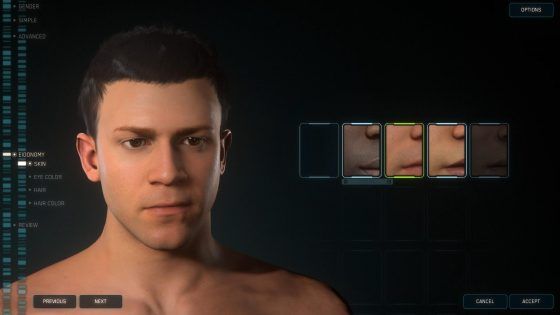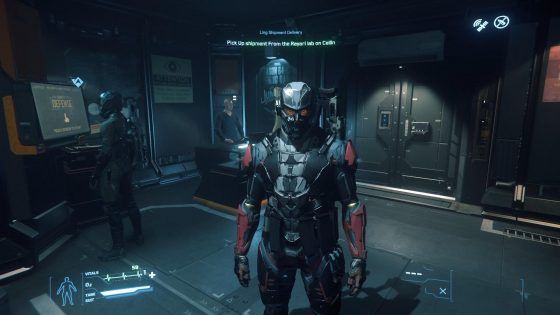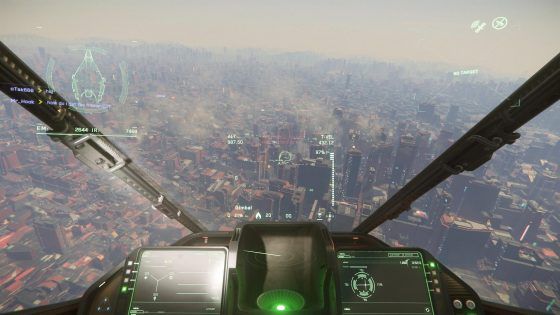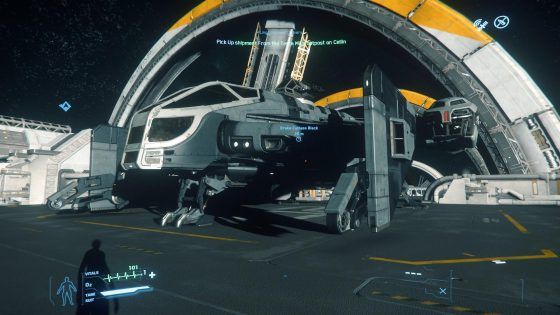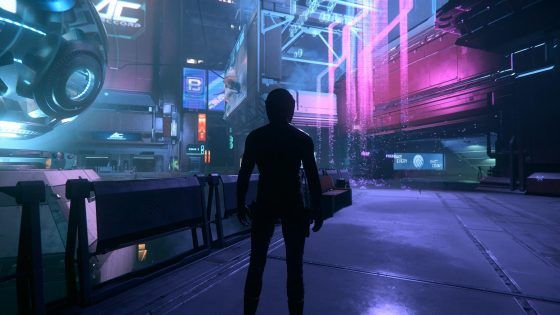Star Citizen is the undisputed king of crowdfunded games, an enterprise of galactic proportions that has everything to go horribly wrong. Cloud Imperium Games’ ambitious project boasts an epic scale that makes other far-reaching games look like a tiny speck of dust in comparison. It’s an endless feature creep that still lacks a release date, despite being in development since 2011 and having raised nearly $300 million so far.
Chris Roberts has the creation of the Wing Commander series to his credit, giving him an authority that very few video game designers can brag about. He is clearly passionate about Star Citizen and has an unwavering vision and a grand scope that plays in his advantage, as much as it is encumbering the game’s progress with stories of endless micro-management. Star Citizen is the greatest game that may never see the light of day.
But we are getting closer to… well, something, and the proof of that is the Free Fly event where anyone could try the Star Citizen Alpha 3.5 and see for themselves how this space epic is shaping up. Spoilers: it’s buggy, the system requirements are sky high and clearly there is an irrational amount of work yet to be done, but I’ll be damned if Star Citizen doesn’t make you feel like a space cowboy in the greatest sci-fi universe ever designed for a video game.
If it will ever be finished – as much as any online game can be –, that is another subject entirely.
In Space No One Can Hear You Blow Up
Star Citizen stands out from the crowd as soon as you click the shortcut; this is an absolute resource hog that will make Crysis and Doom 3 feel like the most optimized games ever at launch. After several minutes of loading to reach the main menu and several minutes more to deploy at the space station, you suddenly come to the realization that backing this game wasn’t enough – maybe the time has come to upgrade your computer. However, that isn’t enough to hide the fact that Star Citizen needs some serious optimization, or it will be roasted by a community that isn’t solely comprised of players with high spec computers.
The Free Fly Alpha 3.5 offers three different ventures into Star Citizen, and that goes without mentioning the stand-alone star-studded single-player adventure Squadron 42, which is slated to launch in 2020. You can go for the full Universe experience or taste some more immediate action-oriented tidbits via the Star Marine and the Arena Commander modules, with the former for first-person shooter gameplay and the latter for epic space dogfights or races.
Star Marine is the module to go if competitive shooters are your thing. It’s intense and visually impressive, with little touches like your heart rate playing an important part – let’s call it stamina –, but you’ve played many shooters before that feel similar. It’s a solid effort that for now offers a scant selection of game modes, Elimination (free-for-all where the player with the highest kill count wins) and Last Stand (battle for control points). Up to 24 players may enter the arena and you can customize your loadout with weapons, armor and utility items such as MedPens and grenades.
Arena Commander offers a similar approach to Star Marine but takes the fight to deep space. This is more uncommon, as there aren’t many games with the looks and sheer maneuverability of Star Citizen’s ships. You will not only be impressed by the amazing views, but the exhilarating dogfighting also comes out strongly commended, shooting other ships while carefully dodging asteroids. It takes a deep knowledge of each ship’s strengths and failings to make the best of every situation, but this obviously is a task that takes a fair length of time.
There is more to Arena Commander than dogfighting, as you take the seat of your ship and race other players through the gigantic rings of a space station, with a beautiful forest on the surface of the planet. Or you can relish on the delights of leisure flight, going to space stations and purely enjoying your time. But if you are of the truly competitive kind and prefer a Battle Royale mode of sorts, Star Citizen has got you covered. Squadron Battle is team deathmatch at its heart, while Vanduul Swarm and Pirate Swarm are both about holding off enemy onslaughts.
While Star Citizen has this everything-for-everyone approach right off the bat, this is a game that is more than the sum of its parts, at least in theory. The mere thought of a game that mixes elements from its modules with a persistent universe where you can be whoever you want, go where you feel like and act as you want is mouth-watering, thrilling and, quite honestly, hard to believe. Seeing is believing won’t cut it in this case; what Star Citizen has to offer right now may feel ambitious and grand, but promises were made about a magnificent scope that is light years away from its current state.
Lost in Stanton
Star Citizen recently saw the addition of female characters, with the visual quality being sky-high - human eyes are universally acknowledged as one of the most difficult features to faithfully reproduce in video games, but the result here is mind-blowing. I can’t say the same for hair, though, which still seems to be a work-in-progress and is particularly lacking on proper female styles. The DNA system is another new feature and raises the level of a character customization system that is trying something new. Instead of using the classic sliders to adjust every facial feature of your avatar, you choose up to three source heads to combine and slightly adjust their traits in a way that should never return a freaking abomination as an option. No offense, Fallout 4.
And now you ask: why should I bother spending two or three hours creating a stunning face for my space hero if it will be covered by a helmet? Well, because you can remove it in space stations, and your lovely face is visible in some helmets anyway, so your work won’t go to waste. The current iteration of Star Citizen’s character customization doesn’t offer any body customization options, but this is on the to-do list. Just don’t ask us when it will make it into the game, because… well, it’s Star Citizen.
My Free Fly adventure begins as soon as I get up from my bed in Port Olisar, a space station in the Stanton Star System. This place is just a tiny dot in a vast universe, as Cloud Imperium Games promised that 100 unique star systems would make it into the game, and there is a star map to prove it. However, Chris Roberts himself said that players should expect between five to ten star systems with the core mechanics in place, something that sounds more reasonable considering the scope of each one and the amount of time and resources that this endeavor demands from the team.
Moving through the space station, I can try on and purchase new Undersuits using the UEC currency. I can’t get anything too fancy, but it’s always nice to change from your base costume. After that I ran to the ship retrieval terminal where I spawn my spacecraft – the Free Fly demo had five on offer, some more suited to combat, others for delivery or racing: Anvil Arrow, MISC Prospector, Drake Cutlass Black, Aegis Avenger Titan and Drake Dragonfly. As soon as your ship reaches the landing pad, make sure to hurry up as you may be occupying valuable space for other players’ ships.
Before heading off to the designed landing pad, it’s important to check your MobiGlas, Star Citizen’s version of Fallout’s Pip-Boy. This device includes vital information for all the needs of a regular space hero, bounty hunter or galaxy courier, whoever you want to be. You can use it to track all your details such as current balance, vitals, atmosphere, suit, vehicle and mission status. But there is much more to it, including managing your equipment, chat with other players, set travel routes or accept contracts. This last one is what makes any Star Citizen adventurer tick, ultimately defining where you need to travel and what type of missions you get to tackle. You can pick some simple delivery jobs, which can go awry at any moment, or you can opt for maintenance, bounty hunter or mercenary contracts.
I didn’t have much luck with my first contract, which consisted in picking up a package from an outpost on Cellin and delivering it to an aid shelter on the same planet. But it wasn’t a matter of space pirates, fuel usage miscalculation or poor piloting skills; no, it was a bug of interplanetary proportions that reared its ugly face in the shape of a non-existing package. How am I expected to deliver something that isn’t available in the precise place where I was told to pick it up?
As it turns out, this is a bug that was previously reported and still needs fixing. Star Citizen has bugs, who would have thought? But it gets worse, with planet surfaces or space stations that fail to render, ships that explode out of nowhere, landings that will give you severe headaches, random crashes… the galaxy is dark and full of bugs.
The Hitchhiker’s Guide to Boarding Your Ship
Much has been said before about Star Citizen’s ships, not all of it praiseworthy. Before jumping into the controversial details I’ll take a quick ride through some of the details and highpoints of these ambitious spacecrafts.
Ships come in all shapes and sizes, often turning a simple task such as entering and getting to the pilot seat into an adventure. You must discover where the ship door is, if there is a ladder to activate, whatever possible means are there to get on board. It’s not an obvious task at first but you’ll soon get the hang of it as you become acquainted with each ship. Once inside, you have a few accommodations at your disposal, usually including a bed which is said to serve as a safe log off/log in feature, but this mechanic seems to be broken at the moment.
Larger ships have one-man turrets, vast cargo space, co-pilot seats and more. When you’re finally seated at the cockpit, your jaw may eventually drop as you look at several fully-functioning displays and feel flabbergasted at what you’re experiencing. It’s a mix of awe and concern, but far from the complex, unintelligible design that the first impression may let on. You only need to find the switches for the basic functions such as powering up the ship, turning the engine on and you should be clear for takeoff.
Star Citizen is a hot topic when it comes to its spacecraft and the asking prices for some of them, with many ships costing over $100 and a few select spacecraft retailing for more than $1,000. While this may sound bonkers and a huge leap of faith for some backers, I absolutely respect the amount of work and character that goes into each ship. It’s a colossal endeavor in some cases, and it feels acceptable if you have some extra cash burning a hole in your pocket and absolute faith in the vision driving Star Citizen. It’s a trophy for backers to proudly display and it’s far from your traditional overpriced piece of armor, or perhaps your useless set of horse armor. It’s a matter of how much you’re willing to spend on Star Citizen and your confidence in the future of the project.
Ship insurance is another controversial subject, as you must pay an in-game fee in order to avoid losing your ship for good – that surely won’t be fun if you’ve spent hundreds of dollars on it. While a few initial backers were rewarded with lifetime insurance, the most likely scenario is that you’ll have to pay a regular fee to get a replacement ship in case it is destroyed – and believe me, it will, either by mistake, space pirates, planetary storms, unfriendly players, fuel loss and other hazards. During the alpha there was no insurance fee, but when it comes into play it will surely make quite some noise, and probably not the good kind.
It’s impossible to go places in a single star system such as Stanton without resorting to Quantum Travel. This is how you navigate the vast space between each planet or outpost, and even a Quantum Jump may take several minutes, as you’ll realize when you decide to travel to ArcCorp, an impressive new planet mostly covered by man-made structures. Quantum Travel is a simple matter of finding your destination on your MobiGlas, setting up the route (and checking if you have enough fuel for the entire ride) and align your markers with the jump location. After spooling you should see your ship bending space and time as it travels to the destination. It’s a simple process that you’ll have to resort very often.
Star Citizen looks stunning and is brimming with details, a lot of them not entirely obvious at first glance. A simple task such as landing on ArcCorp becomes a challenge when you failed to realize that you need to access your MobiGlas and request landing permission to the ArcCorp Landing Services. You’ll then be assigned a landing pad which you may or may not have a hard time finding, carefully avoiding the deluge of invisible walls on this planet. After a tricky landing you are finally able to explore the area, travel to other regions using the tram and fulfill some of your contracts. ArcCorp surely is a wonderful sight from the skies, but it is also a clear indication of the unmeasured ambition that fuels Star Citizen – most of the buildings will surely be just for show, and it couldn’t be otherwise, as there are dozens of other star systems waiting to be created.
I have mixed feelings about Star Citizen. It clearly isn’t a hoax, vaporware or whatever wicked words have been uttered about it. On the other hand, despite a feeling of grandeur, it’s far from the game that it wants to be, even after all these years of development and all those millions in crowdfunding. In a perfect world, Star Citizen would turn out to be the ultimate space epic game, but I don’t see that happening anytime soon. What this alpha showed us was that it is a jaw-dropping, feature-rich game that is equally frustrating and buggy.
I have no doubts that Star Citizen is trying to reach for the skies and will probably fall on its face when it launches. Because it will never be “officially released”, it will be stuck in a perpetual state of continuous development, a “game as a service” that will require huge amounts of money and a skilled development team to rise to the inevitable challenges. Star Citizen is No Man’s Sky turned up to eleven, boasting a much larger scope and a lot more controversy stemming from Chris Roberts’ unwavering vision – hopefully with the same happy ending as Hello Games’ once disappointing science-fiction epic.
